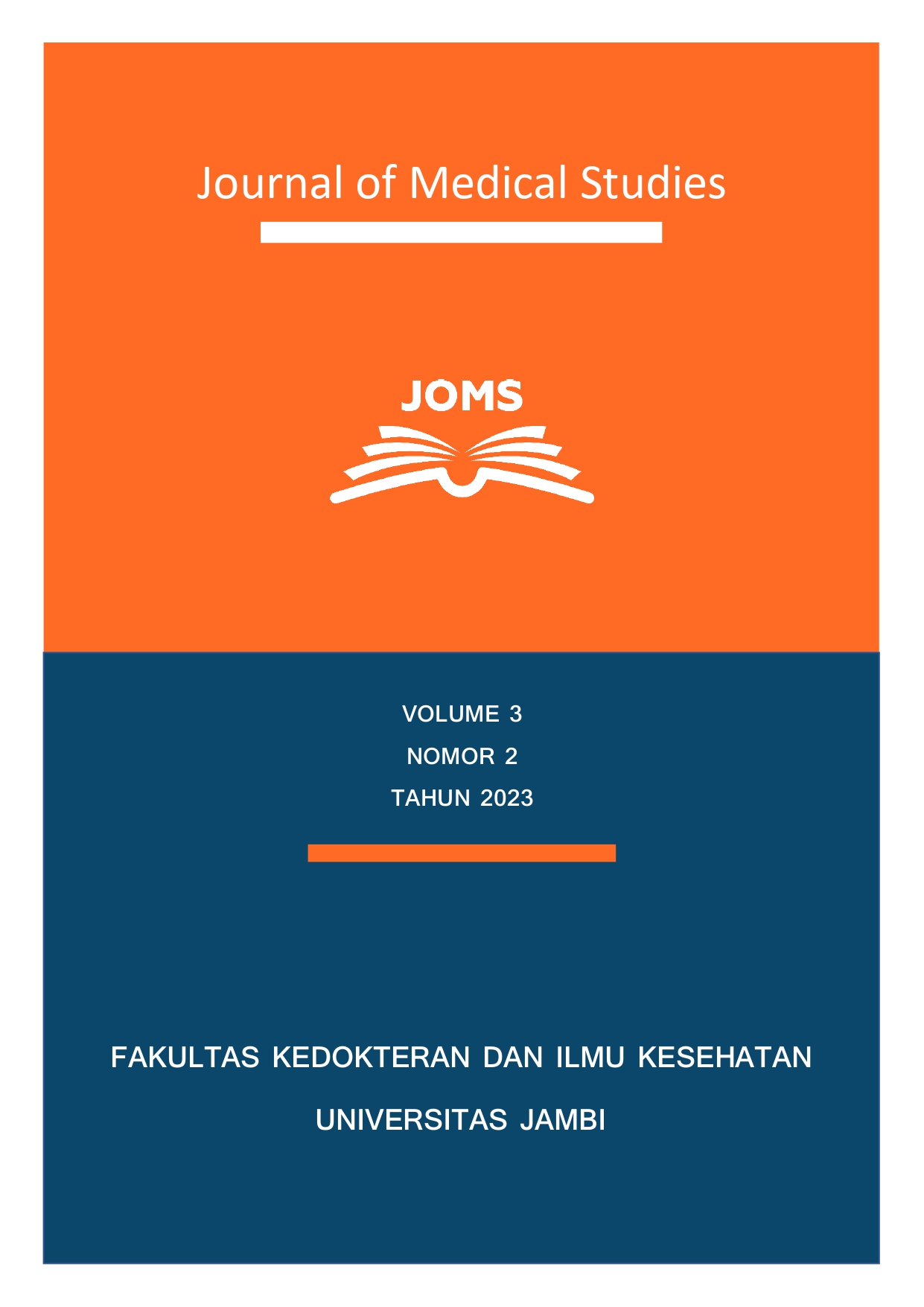Gambaran Mikroskopik pada Hepar Tikus Putih Setelah Pemberian Madu sebagai Anti Adhesi Pasca Laparotomi
DOI:
https://doi.org/10.22437/joms.v3i2.27369Abstract
ABSTRACT
Background: Honey contains heterogeneous substances that inhibit the growth of gram-positive and gram-negative bacteria. It has an anti-inflammatory effect and enhances the healing process after peritoneal damage. Honey, given intraperitoneally, as much as 34% will be absorbed into the systemic circulation and metabolized by the liver. Methods: Paraffin blocks of rat liver organs weighing 200 grams were divided into four groups. Group A was the control group; Group B was given 3 ml of NaCl; Group C was given 0.27 ml of honey intraperitoneally; and Group D was given 0.54 ml of honey intraperitoneally. Histological examination of liver preparations with 40x and 100x magnification microscope. Results: The study showed changes in cell structure in the form of bleeding, portal inflammation, inface hepatitis, lobular inflammation and vacuolization in all treatment groups. Conclusion: Damage to hepatocyte cells in the form of bleeding, portal inflammation, inface hepatitis, lobular inflammation and vacuolization with observations of all fields of view was found in all treatments, namely giving honey at a dose of 0.27 ml, 0.54 ml honey, given 0.9% NaCl 3 ml and the control group.
Keywords: Honey, Liver, Anti adhesi
ABSTRAK
Latar Belakang: Madu mengandung zat heterogen menghambat tumbuhnya bakteri gram positif dan gram negatif, memiliki efek antiinflamasi, dan meningkatkan proses penyembuhan setelah kerusakan peritoneal. Madu yang diberikan secara intraperitoneal, sebanyak 34% akan diserap ke dalam sirkulasi sistemik dan dimetabolisme oleh hepar. Metode: Blok paraffin organ hepar tikus dengan berat 200 gram yang dibagi 4 kelompok. Kelompok A kelompok kontrol, kelompok B diberikan NaCl 3 ml, kelompok C diberikan madu 0,27 ml intraperitoneal, kelompok D diberikan madu 0,54 ml intraperitoneal. Pemeriksaan histologi preparat hepar dengan mikroskop pembesaran 40x dan 100x. Hasil: Hasil dari penelitian terdapat perubahan struktur sel berupa perdarahan ,portal inflamasi, inface hepatitis, lobular inflamasi dan vakuolisasi pada semua kelompok perlakuan. Kesimpulan: Kerusakan sel hepatosit berupa perdarahan, portal inflamasi , inface hepatitis, lobular inflamasi dan vakuolisasi dengan pengamatan seluruh lapangan pandang didapatkan pada semua perlakuan yaitu pemberian madu dosis 0,27ml ,madu 0,54ml, diberikan NaCl 0,9% 3 ml dan kelompok kontrol.
Kata Kunci: Madu, Hepar, Anti adhesion
Downloads

Downloads
Published
Issue
Section
License
Copyright (c) 2023 Intan Fatayat Af, Miftahurrahmah, Deri Mulyadi

This work is licensed under a Creative Commons Attribution-NonCommercial 4.0 International License.
Journal of Medical Studies (JOMS) by Fakultas Kedokteran dan Ilmu Kesehatan Universitas Jambi.






 Journal of Medical Studies (JOMS) by Fakultas Kedokteran dan Ilmu Kesehatan Universitas Jambi
Journal of Medical Studies (JOMS) by Fakultas Kedokteran dan Ilmu Kesehatan Universitas Jambi